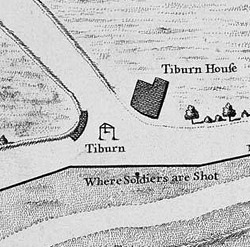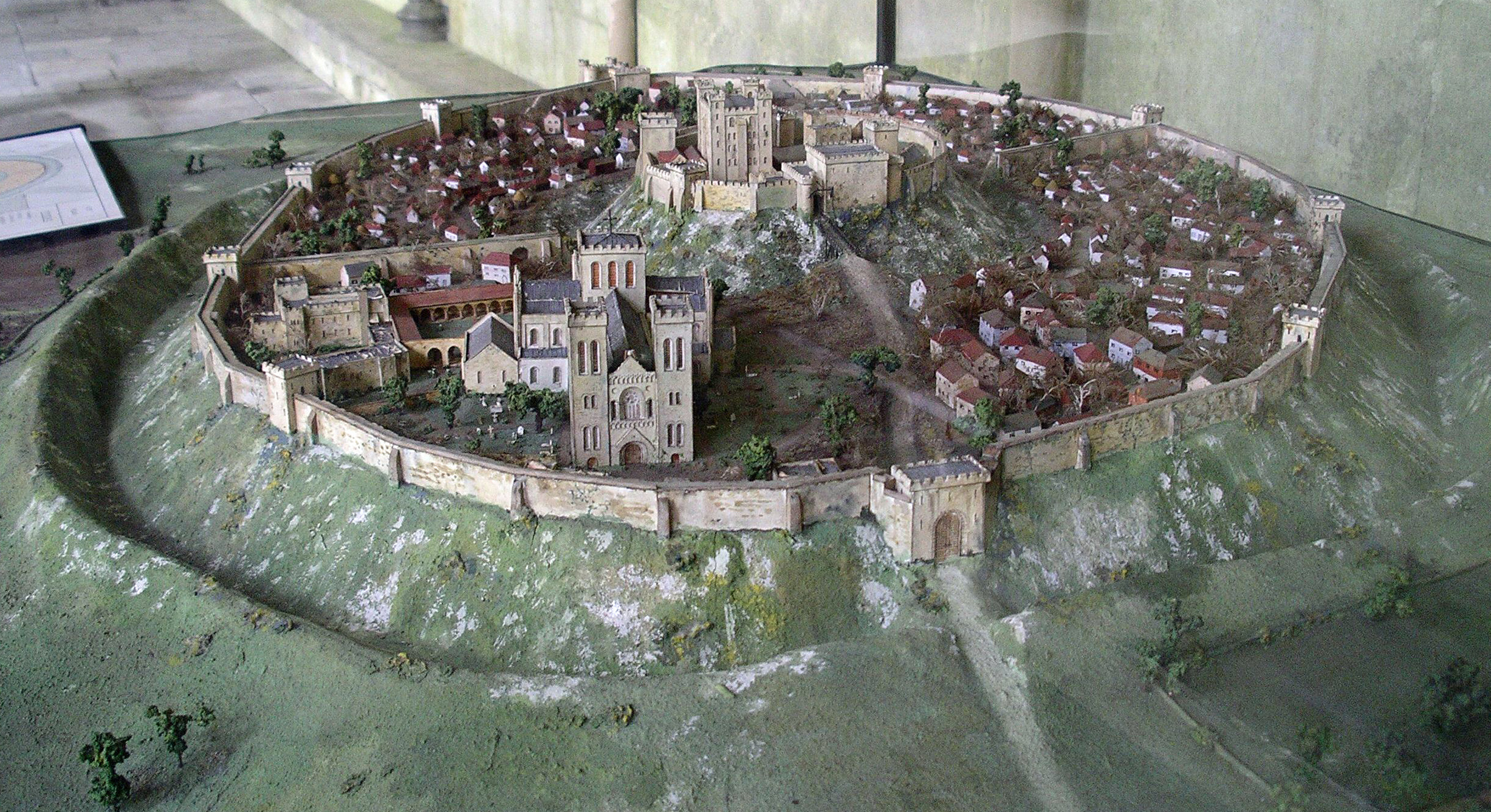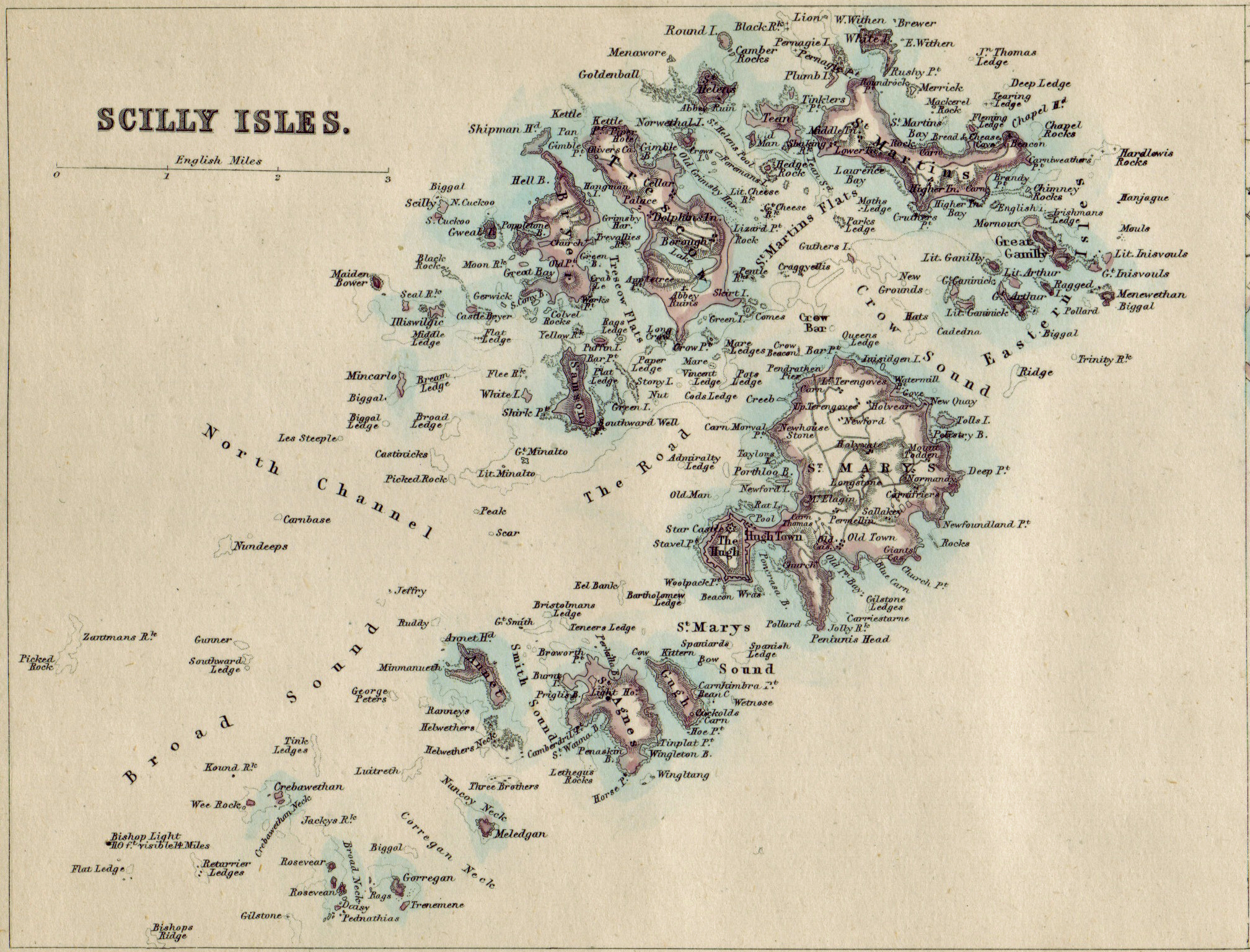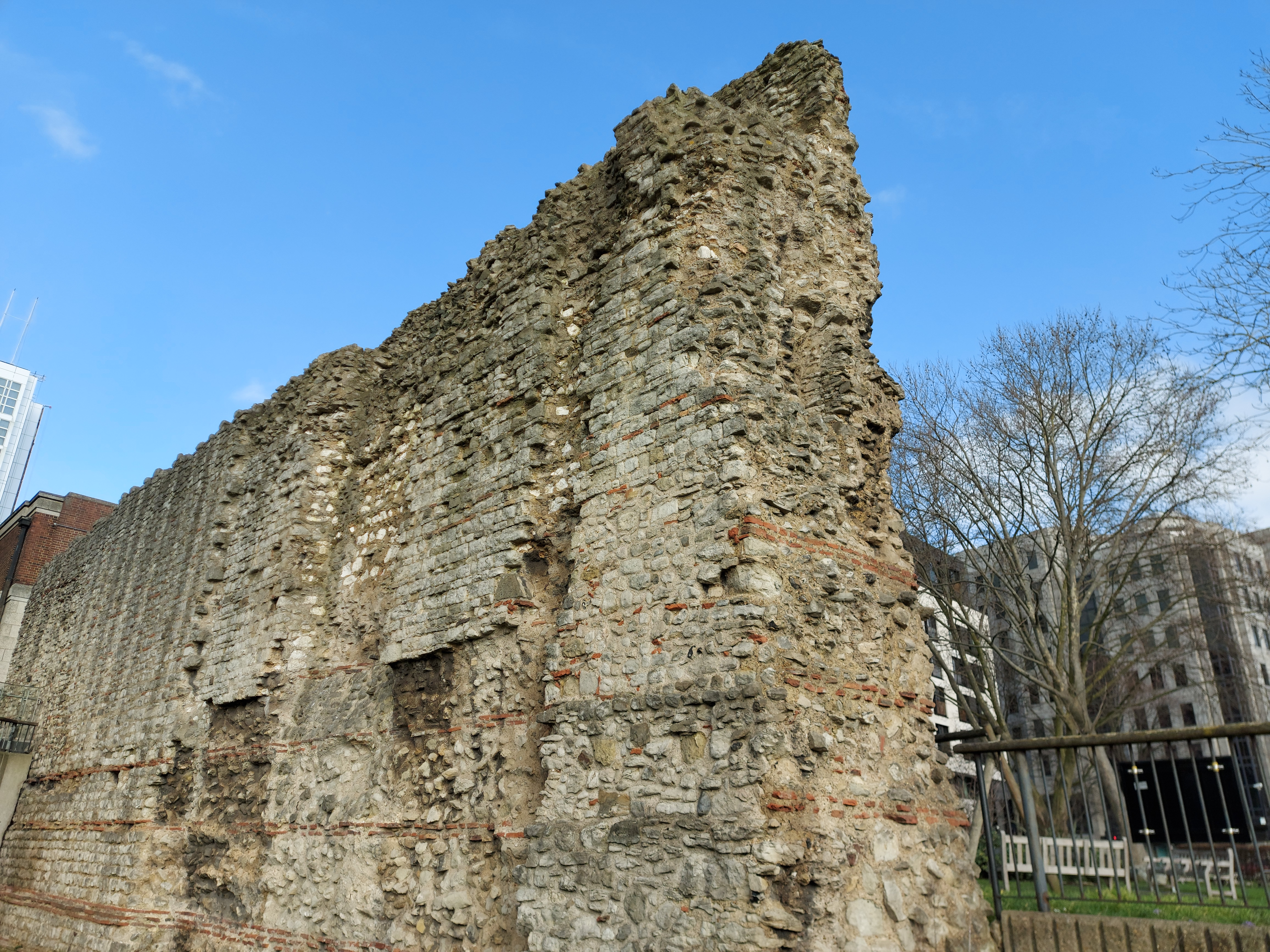|
Thomas Flamank
Thomas Flamank (died 27 June 1497) was a lawyer and former MP from Cornwall, who together with Michael An Gof led the Cornish rebellion of 1497, a protest against taxes imposed by Henry VII of England. Ancestry He was the eldest son of Richard Flamank or Flammock of Boscarne, by Johanna or Jane, daughter of Thomas Lucombe of Bodmin, and older brother of John Flamank, MP for Bodmin in 1515. Thomas Flamank himself had been MP for Bodmin in 1492. The family is of great antiquity at Bodmin, having held the manor of Nanstallon in uninterrupted succession from the fourteenth to the nineteenth century (1817). In early times the name appeared as Flandrensis, Flemang, Flammank, and in other forms Thomas Flamank married Elizabeth, daughter of John Trelawny of Menwynick, and had a daughter Joanna, wife of Peter Fauntleroy. Life In 1497 Henry VII was attempting to raise a subsidy in Cornwall for the despatch of an army to Scotland to punish James IV for supporting Perkin Warbeck. Mich ... [...More Info...] [...Related Items...] OR: [Wikipedia] [Google] [Baidu] |
Tyburn
Tyburn was a Manorialism, manor (estate) in London, Middlesex, England, one of two which were served by the parish of Marylebone. Tyburn took its name from the Tyburn Brook, a tributary of the River Westbourne. The name Tyburn, from Teo Bourne (stream), Bourne, means 'boundary stream'.Gover, J. E. B., Allen Mawer and F. M. Stenton ''The Place-Names of Middlesex''. Nottingham: English Place-Name Society, The, 1942: 6. The parish, and probably therefore also the manor, was bounded by Roman roads to the west (modern Edgware Road) and south (modern Oxford Street). The junction of these was the site of the famous Tyburn Gallows (known colloquially as the "Tyburn Tree"), now occupied by Marble Arch. For many centuries the name Tyburn was synonymous with capital punishment: it was the principal place for execution for London and Middlesex criminals and convicted Treason, traitors, including many religious martyrs. In the 18th century it was also known as "God's Tribunal". Hangings at ... [...More Info...] [...Related Items...] OR: [Wikipedia] [Google] [Baidu] |
Salisbury
Salisbury ( , ) is a city status in the United Kingdom, cathedral city and civil parish in Wiltshire, England with a population of 41,820, at the confluence of the rivers River Avon, Hampshire, Avon, River Nadder, Nadder and River Bourne, Wiltshire, Bourne. The city is approximately from Southampton and from Bath, Somerset, Bath. Salisbury is in the southeast of Wiltshire, near the edge of Salisbury Plain. An ancient cathedral was north of the present city at Old Sarum Cathedral, Old Sarum. A Salisbury Cathedral, new cathedral was built near the meeting of the rivers and a settlement grew up around it, which received a city charter in 1227 as . This continued to be its official name until 2009 structural changes to local government in England, 2009, when Salisbury City Council was established. Salisbury railway station is an interchange between the West of England line, West of England Line and the Wessex Main Line. Stonehenge, a UNESCO World Heritage Site, is northwest o ... [...More Info...] [...Related Items...] OR: [Wikipedia] [Google] [Baidu] |
Prayer Book Rebellion
The Prayer Book Rebellion or Western Rising was a popular revolt in Cornwall and Devon in 1549. In that year, the Book of Common Prayer (1549), first ''Book of Common Prayer'', presenting the theology of the English Reformation, was introduced. The change was widely unpopular, particularly in areas where firm Catholic religious loyalty (even after the Acts of Supremacy, Act of Supremacy in 1534) still existed, such as Lancashire. Along with poor economic conditions, the enforcement of English language church services only in Cornish language, Cornish-speaking areas led to an explosion of anger in Cornwall and Devon, initiating an uprising. At the gates of Exeter, the rising leaders announced, "and so we Cornishmen, whereof certain of us understand no English, utterly refuse this new English". In response, Edward Seymour, 1st Duke of Somerset, sent John Russell, 1st Earl of Bedford, John Russell to suppress the revolt, with the rebels being defeated and its leaders executed two ... [...More Info...] [...Related Items...] OR: [Wikipedia] [Google] [Baidu] |
List Of Topics Related To Cornwall
The following outline is provided as an overview of and topical guide to Cornwall: Cornwall – ceremonial county and unitary authority area of England within the United Kingdom. Cornwall is a peninsula bordered to the north and west by the Celtic Sea,International Hydrographic Organization to the south by the English Channel, and to the east by the county of Devon, over the River Tamar. Cornwall is also a royal duchy of the United Kingdom. It has an estimated population of half a million and it has its own distinctive history and culture. General reference * Etymology of "Cornwall" * Common English name(s): Cornwall * Common endonym(s): Kernow * Adjectival(s): Cornish * Demonym(s): Cornish Geography of Cornwall Geography of Cornwall * Cornwall is a mainland county of Great Britain and part of the British Isles. It reaches from the south-westernmost point into the Atlantic Ocean and English Channel. It is in Eurasia (but not on the mainland) in the Northern ... [...More Info...] [...Related Items...] OR: [Wikipedia] [Google] [Baidu] |
The Shadow Of The Tower
''The Shadow of the Tower'' is a historical drama that was broadcast on BBC2 in 1972. It was a prequel to the earlier serials '' The Six Wives of Henry VIII'' and ''Elizabeth R'' and featured several actors who had appeared in them (but in new roles). Consisting of thirteen episodes, it focused on the reign of Henry VII of England and the creation of the Tudor dynasty The House of Tudor ( ) was an English and Welsh dynasty that held the throne of England from 1485 to 1603. They descended from the Tudors of Penmynydd, a Welsh noble family, and Catherine of Valois. The Tudor monarchs ruled the Kingdom of Eng .... Cast Episodes References External links * 1972 British television series debuts 1972 British television series endings 1970s British drama television series BBC television royalty dramas 1970s British television miniseries Television set in Tudor England Prequel television series House of Tudor British English-language television shows Television ... [...More Info...] [...Related Items...] OR: [Wikipedia] [Google] [Baidu] |
John Castle
John Michael Frederick Castle (born 14 January 1940) is an English actor. He is best known for his film and television work, most notably playing Bill in Michelangelo Antonioni's '' Blowup'' (1966) and Geoffrey in '' The Lion in Winter'' (1968). Other significant credits include '' Man of La Mancha'' (1972), ''I, Claudius'' (1976) and '' RoboCop 3'' (1993). Early life Born in Croydon, Castle was educated at Brighton College and Trinity College, Dublin, and trained at the Royal Academy of Dramatic Art (RADA). Work Castle's first appearance was as Westmoreland on stage in '' Henry V'' on 5 June 1964, at the Open Air Theatre, Regent's Park. He was 24 years old. His first Broadway theatre appearance was in February 1970 as "Jos" in the short-lived musical '' Georgy''. His screen debut was in Michelangelo Antonioni's 1966 film '' Blowup'' playing David Hemmings' artist friend, Bill. In 1968, he portrayed the plotting Prince Geoffrey in the film adaptation of '' The Lion in ... [...More Info...] [...Related Items...] OR: [Wikipedia] [Google] [Baidu] |
Keskerdh Kernow 500
The Cornish rebellion of 1497 ( Cornish: ''Rebellyans Kernow''), also known as the First Cornish rebellion, was a popular uprising in the Kingdom of England, which began in Cornwall and culminated with the Battle of Deptford Bridge near London on 17 June 1497. The insurgent army mainly comprised Cornishmen, although it also gathered support from Devon, Somerset, and other English counties. The rebellion was a response to hardship caused by the raising of war taxes by King Henry VII to finance a campaign against Scotland. Cornwall suffered particularly because the king had recently stopped the legal operation of Cornish tin mining. The rebellion's immediate outcome was military defeat, the execution of its main leaders, and death or other punishment for many of its participants. It may have led Perkin Warbeck, a pretender to the English throne, to choose Cornwall as his base later in the year for another attempt to overthrow Henry VII: an episode known as the Second Cornish ... [...More Info...] [...Related Items...] OR: [Wikipedia] [Google] [Baidu] |
Last Words
Last words are the final utterances before death. The meaning is sometimes expanded to somewhat earlier utterances. Last words of famous or infamous people are sometimes recorded (although not always accurately), which then became a historical and literary trope. According to Karl Guthke, last words as recorded in public documents are reflections of the social attitude toward death at the time, rather than reports of actual statements. Published last words may reflect words that the dying person's intimates or supporters wished were their final testament. Actual last words are typically less grandiose than those attributed to historical figures, and are also rarely published. Dying people frequently suffer delirium, diminished mental acuity, inability to speak clearly, or some combination of the three. McLeod said people near death do not normally remain mentally clear. Some do not speak before their death. "People will whisper, and they'll be brief, single words – that's all ... [...More Info...] [...Related Items...] OR: [Wikipedia] [Google] [Baidu] |
Tower Hill
Tower Hill is the area surrounding the Tower of London in the London Borough of Tower Hamlets. It is infamous for the public execution of high status prisoners from the late 14th to the mid 18th century. The execution site on the higher ground north-west of the Tower of London moat is now occupied by Trinity Square Gardens. Tower Hill rises from the north bank of the River Thames to reach a maximum height of 14.5 metres (48 ft) Ordnance Datum. The land was historically part of the Liberties of the Tower of London, an area the Tower authorities controlled to keep clear of any development which would reduce the defensibility of the Tower. Building has encroached to a degree, but a legacy of this control is that much of the hill is still open. The hill includes land on either side of the London Wall, a large remnant of which is visible. Definition Generally speaking, the name Tower Hill informally applies to those parts of the Liberties of the Tower of London, Towe ... [...More Info...] [...Related Items...] OR: [Wikipedia] [Google] [Baidu] |
Deptford Strand
Deptford is an area on the south bank of the River Thames in southeast London, in the Royal Borough of Greenwich and London Borough of Lewisham. It is named after a ford of the River Ravensbourne. From the mid 16th century to the late 19th it was home to Deptford Dockyard, the first of the Royal Dockyards. This was a major shipbuilding dock and attracted Peter the Great to come and study shipbuilding. Deptford and the docks are associated with the knighting of Sir Francis Drake by Queen Elizabeth I aboard the ''Golden Hind'', the legend of Sir Walter Raleigh laying down his cape for Elizabeth, Captain James Cook's third voyage aboard HMS ''Resolution'', and the mysterious apparent murder of Christopher Marlowe in a house along Deptford Strand. Though Deptford began as two small communities, one at the ford, and the other a fishing village on the Thames, Deptford's history and population has been mainly associated with the docks established by Henry VIII. The two communities ... [...More Info...] [...Related Items...] OR: [Wikipedia] [Google] [Baidu] |







